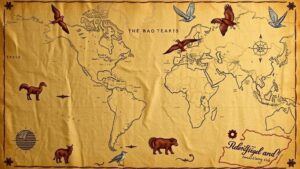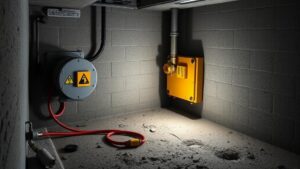Detecting for Soldier’s Personal Effects Near Abandoned Battlefield Hospitals
Detecting for Soldier’s Personal Effects Near Abandoned Battlefield Hospitals
The loss of soldiers during conflicts often leads to a pressing issue: the recovery of their personal effects. These items can not only serve as a poignant reminder of the individual soldier but also offer insights into the historical, cultural, and social contexts of the battles fought. The practice of detecting for personal effects near abandoned battlefield hospitals combines archaeology, history, and technology to honor these individuals and understand their narratives. This article delves into the methodologies, technologies, challenges, and real-world applications involved in this vital task.
Understanding the Context: Abandoned Battlefield Hospitals
Abandoned battlefield hospitals became makeshift medical facilities during wars, where soldiers received treatment often in precarious conditions. As a result, these sites are often rich in artifacts, leading to significant archaeological interest. For example, during the American Civil War, many hospitals were set up in homes, churches, and even on the battlefields themselves. remnants of these medical centers can provide substantial information regarding the medical practices of the time, the conditions faced by soldiers, and the aftermath of battles.
Importance of Personal Effects
Personal effects, such as letters, photographs, personal belongings, and uniform items, serve multiple purposes:
- Historical Insight: They provide a window into the daily lives and thoughts of soldiers, offering a personal connection to history.
- Cultural Identity: Personal items can reflect the cultural backgrounds of the soldiers, showcasing diverse narratives.
- Commemoration: Recovering and preserving these items serves a crucial role in honoring the memory of individuals who served.
Detective Methodologies
The methodology for detecting personal effects involves a combination of historical research, archaeological techniques, and modern technology. The following steps outline the process:
- Site Research: Prior to excavation or detection, researchers conduct thorough historical studies to identify the locations of past battlefield hospitals. Archival records, maps, and survivor accounts can be invaluable.
- Site Surveying: Using tools like GPS and GIS (Geographical Information Systems) technology, researchers establish precise locations for surveying. This initial phase is crucial to target areas with the highest potential for finding artifacts.
- Geophysical Methods: Techniques such as ground-penetrating radar (GPR) and magnetometry can help locate buried items without disturbing the soil. GPR provides imagery of subsurface anomalies that could indicate burial sites.
Technologies Employed
Incorporating advanced technologies can significantly enhance the efficiency of personal effects recovery. Two noteworthy technologies are:
- Metal Detectors: These devices are widely used to locate metallic objects such as dog tags, buttons, and other personal items. Newer models are sensitive enough to distinguish various metal types, leading to greater recovery accuracy.
- Drones: Equipped with high-resolution cameras and sensors, drones can conduct aerial surveys of large areas quickly. They can also map sites more safely than traditional ground methods, identifying locations that may not be immediately visible.
Challenges in the Field
Despite the promising methodologies and technologies, several challenges persist:
- Legal and Ethical Issues: There are often strict laws governing the excavation of historical sites. Unauthorized digging can lead to legal consequences and loss of invaluable archaeological context.
- Environmental Considerations: Many battlefield hospital sites are located in sensitive ecological areas, raising concerns about potential damage to the ecosystem during the recovery process.
- Condition of Artifacts: Items uncovered may be fragile or damaged, necessitating careful handling and immediate conservation efforts to preserve their historical integrity.
Real-World Applications and Case Studies
Real-world applications highlight the effectiveness of these methodologies. A notable example is the Union Armys Battle of Gettysburg, which had numerous makeshift hospitals. Archaeological teams have employed metal detection methods and GPR to successfully recover artifacts such as personal letters and medical instruments. These finds not only contribute to our understanding of the medical practices at that time but also honor the memories of those lost.
Another case study involves the WWI sites in France, where organizations like “Les Amis de Verdun” have been instrumental in recovering personal effects. r work has led to important discoveries, including soldier identities and their stories, contributing to both historical records and current memorialization efforts.
Actionable Takeaways
The task of detecting for soldier’s personal effects near abandoned battlefield hospitals represents a multifaceted intersection of archaeology, history, and technology. For individuals or organizations interested in pursuing this field, consider the following actionable takeaways:
- Engage with Local Historians: Building relationships with local historians can provide guidance on historical significance and uncover lesser-known sites.
- Use Technology: Invest in training for the use of modern technology like drones and metal detectors to maximize efficiency in recovery efforts.
- Prioritize Ethics: Always adhere to local laws and ethical guidelines in archaeological practices to ensure the integrity and preservation of historical sites.
To wrap up, the detection of personal effects from soldiers near abandoned battlefield hospitals serves both as a vital historical practice and a means to honor individual sacrifices. By combining rigorous methodology, advanced technology, and a respect for the past, we can continue to illuminate the rich tapestry of human experiences woven through war.


